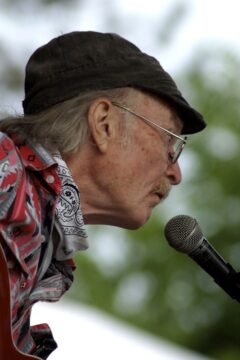Andrei Kolesnikov in Public Seminar:
In the age of mature Putinism, violence and control, accompanied by a new morality based on so-called “traditional values,” have become crucial instruments for managing Russian society. The use of the education system and cultural institutions to indoctrinate the population—above all young people—is a form of violence, only intellectual rather than physical.
In some respects, the scale of repression is greater now than in the late Soviet period. The absurdity of the accusations and even the number of convictions on political charges is increasingly reminiscent of the Stalin era. On February 27, 2024, for example, the human rights activist Oleg Orlov was jailed for actions allegedly motivated by “hatred of traditional values.” Ideology is acquiring a practical significance in the implementation of political repression.
The function of ideology and ideological agencies—from the Ministry of Education and communications watchdog Roskomnadzor to the prosecutor general’s office, the Ministry of Justice, the Investigative Committee and the Federal Security Service (FSB)—is to present a single vision of the world and to punish anything that refutes or contradicts it. All of these agencies are becoming mechanisms for controlling ideology and culture.
The first decree that Russian President Vladimir Putin signed after his fifth inauguration in May 2024 was “On the Approval of the Fundamentals of State Policy of the Russian Federation in the Field of Historical Education.” According to the decree, which serves as the foundation of the state ideology and a blueprint for the indoctrination of the population, everything is to be unified within the framework of “historical education”: a consolidated instructional methodology for all education levels starting with kindergarten, and of course a “unified state line of history textbooks.”
More here.
Enjoying the content on 3QD? Help keep us going by donating now.

 Fyodor Dostoyevsky began to write what would become his last novel, “
Fyodor Dostoyevsky began to write what would become his last novel, “ “Magic mushrooms”—long used by Indigenous communities in ceremonial contexts and popularized during the psychedelic heyday of the 1960s—are once again entering the mainstream, in large part for the potential clinical applications of their psychoactive component, psilocybin. Though scientific interest has thus far mainly focused on the use of psilocybin for treating psychiatric conditions like anxiety and depression, a recent study made headlines for findings that hinted at a role for psilocybin in aging-related processes. Specifically, authors Kato et. al. present data from human cells and aging mice that suggest psilocybin could potentially act as a lifespan-extending drug.1
“Magic mushrooms”—long used by Indigenous communities in ceremonial contexts and popularized during the psychedelic heyday of the 1960s—are once again entering the mainstream, in large part for the potential clinical applications of their psychoactive component, psilocybin. Though scientific interest has thus far mainly focused on the use of psilocybin for treating psychiatric conditions like anxiety and depression, a recent study made headlines for findings that hinted at a role for psilocybin in aging-related processes. Specifically, authors Kato et. al. present data from human cells and aging mice that suggest psilocybin could potentially act as a lifespan-extending drug.1 Schiff estimates Updike typed some 25,000 letters and postcards over the course of his life. He neglected to keep carbons and used whatever paper was handy. (“I am pleased to see we share a lack of official stationeries,” he wrote to Alice Munro in 2006, reveling in the reverse snobbery.) He didn’t think much of these missives, or so he said. He told his editor at Knopf, Judith Jones, that “my letters are too dull to be dredged up.”
Schiff estimates Updike typed some 25,000 letters and postcards over the course of his life. He neglected to keep carbons and used whatever paper was handy. (“I am pleased to see we share a lack of official stationeries,” he wrote to Alice Munro in 2006, reveling in the reverse snobbery.) He didn’t think much of these missives, or so he said. He told his editor at Knopf, Judith Jones, that “my letters are too dull to be dredged up.” In 1939, upon arriving late to his statistics course at the University of California, Berkeley, George Dantzig — a first-year graduate student — copied two problems off the blackboard, thinking they were a homework assignment. He found the homework “harder to do than usual,” he would later recount, and apologized to the professor for taking some extra days to complete it. A few weeks later, his professor told him that he had solved two famous open problems in statistics. Dantzig’s work would provide the basis for his doctoral dissertation and, decades later, inspiration for the film Good Will Hunting.
In 1939, upon arriving late to his statistics course at the University of California, Berkeley, George Dantzig — a first-year graduate student — copied two problems off the blackboard, thinking they were a homework assignment. He found the homework “harder to do than usual,” he would later recount, and apologized to the professor for taking some extra days to complete it. A few weeks later, his professor told him that he had solved two famous open problems in statistics. Dantzig’s work would provide the basis for his doctoral dissertation and, decades later, inspiration for the film Good Will Hunting. Trace evidence analysis is the most versatile of the crime scene disciplines, requiring a specialist to be ready for whatever comes through the door. Officially, a trace analyst handles anything that doesn’t fit into the other standard crime lab departments, which tend to include body fluids (also known as serology), fingerprints, and ballistics. In reality, it can include analyzing an absurd variety of materials. It could be flame accelerant, explosives, cosmetics, carpet fibers, tree bark, hairs, shoe prints, clothing, dirt, glass fragments, tape, glue, and, yes, glitter.
Trace evidence analysis is the most versatile of the crime scene disciplines, requiring a specialist to be ready for whatever comes through the door. Officially, a trace analyst handles anything that doesn’t fit into the other standard crime lab departments, which tend to include body fluids (also known as serology), fingerprints, and ballistics. In reality, it can include analyzing an absurd variety of materials. It could be flame accelerant, explosives, cosmetics, carpet fibers, tree bark, hairs, shoe prints, clothing, dirt, glass fragments, tape, glue, and, yes, glitter. What made Clark’s appearance in the guise of an art critic an event was not just his already existing eminence as an art historian. Nor was it the fact that Clark is one of the rare art historians who has forged a style for his writing, by which I mean that he is always himself, and always recognizably himself, in his prose. Rather, it was that he was contravening the conventional division of labor within art writing: Old art is the subject of history, new art is the subject of criticism. What was thrilling about Clark’s new enterprise was that he was writing about artists such as Bosch and Velázquez not as a historian but as a critic—and yet was doing so with a historian’s erudition and authority rather than with the more approachable fluency with which a belletristic critic such as Jed Perl or Peter Schjeldahl might do so. He was, in a sense, disproving (or at least providing an exception to) Marcel Duchamp’s cynical remark that “after a work has lived almost the life of a man…comes a period when that work of art, if it is still looked at by onlookers, is put in a museum. A new generation decides that it is all right. And those two ways of judging a work of art”—before and after it is consecrated by the museum—“certainly don’t have anything in common.” Clark, by contrast, was treating the art of the past as what it is or should be, something alive and challenging in the present, and not just as what it also is, an artifact.
What made Clark’s appearance in the guise of an art critic an event was not just his already existing eminence as an art historian. Nor was it the fact that Clark is one of the rare art historians who has forged a style for his writing, by which I mean that he is always himself, and always recognizably himself, in his prose. Rather, it was that he was contravening the conventional division of labor within art writing: Old art is the subject of history, new art is the subject of criticism. What was thrilling about Clark’s new enterprise was that he was writing about artists such as Bosch and Velázquez not as a historian but as a critic—and yet was doing so with a historian’s erudition and authority rather than with the more approachable fluency with which a belletristic critic such as Jed Perl or Peter Schjeldahl might do so. He was, in a sense, disproving (or at least providing an exception to) Marcel Duchamp’s cynical remark that “after a work has lived almost the life of a man…comes a period when that work of art, if it is still looked at by onlookers, is put in a museum. A new generation decides that it is all right. And those two ways of judging a work of art”—before and after it is consecrated by the museum—“certainly don’t have anything in common.” Clark, by contrast, was treating the art of the past as what it is or should be, something alive and challenging in the present, and not just as what it also is, an artifact. L
L Michael Hurley,
Michael Hurley, How can we stay happy in an age gone mad? It often feels as though all is unstable at the moment. Uncertainty dominates the economy. Our politics and planet are a mess. Scientific experts and government workers have been cast aside.
How can we stay happy in an age gone mad? It often feels as though all is unstable at the moment. Uncertainty dominates the economy. Our politics and planet are a mess. Scientific experts and government workers have been cast aside.  Imagine that you are a cook, and you just made a cake in your kitchen. You’ve made a delicious cake, and you’d like to start a business making 1,000 of them a day. So you replicate your kitchen 1,000 times over—you buy 1,000 residential ovens, 1,000 standard mixing bowls, 1,000 bags of flour. And you hire 1,000 humans to follow your recipe, each making their own cake in the various kitchens you’ve built.
Imagine that you are a cook, and you just made a cake in your kitchen. You’ve made a delicious cake, and you’d like to start a business making 1,000 of them a day. So you replicate your kitchen 1,000 times over—you buy 1,000 residential ovens, 1,000 standard mixing bowls, 1,000 bags of flour. And you hire 1,000 humans to follow your recipe, each making their own cake in the various kitchens you’ve built. With their bladed paws, wielded by a rippling mass of pure muscle, sharp eyes, agile reflexes, and crushing fanged jaws, lions are certainly not a predator most animals have any interest in messing with. Especially seeing as they also have the smarts to hunt in packs.
With their bladed paws, wielded by a rippling mass of pure muscle, sharp eyes, agile reflexes, and crushing fanged jaws, lions are certainly not a predator most animals have any interest in messing with. Especially seeing as they also have the smarts to hunt in packs.